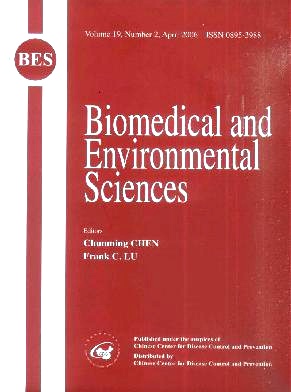Relationship of Remote Sensing Normalized Differential Vegetation Index to Anopheles Density and Malaria Incidence Rate
-
Key words:
- Anopheles density /
- NDVI /
- Grey correlation analysis
Abstract: To study the relationship of remote sensing normalized differential vegetation index (NDVI) to Anopheles density and malaria incidence rate. Methods Data of monthly average climate, environment, Anopheles density and malaria incidence rate, and remote sensing NDVI were collected from 27 townships of 10 counties in southeastern Yunnan Province from 1984 to 1993. The relationship of remote sensing ecological proxy index, NDVI, to Anopheles density and malaria incidence rate was studied by principal component analysis, factor analysis and grey correlation analysis. Results The correlation matrix showed that NDVI highly correlated with Anopheles density in 4 townships of Mengla, Jinghong, and Yuanjiang counties, but in other 23 townships the relationship was not clear. Principal component and factor analyses showed that remote sensing NDVI was the representative index of the first principal component and the first common factor of Anopheles density evaluation. Grey correlation analysis showed that in rainy season NDVI had a high grey correlation with Anopheles density and malaria incidence rate. The grey correlation analysis showed that in rainy season the grey degree of NDVI correlated with Anopheles. Minimus density was 0.730, and 0.713 with Anopheles sinensis density, and 0.800 with malarial incidence rate. Conclusion Remote sensing NDVI can serve as a sensitive evaluation index of Anopheles density and malaria incidence rate.
| Citation: | JUN LIU, XING-PENG CHEN. Relationship of Remote Sensing Normalized Differential Vegetation Index to Anopheles Density and Malaria Incidence Rate[J]. Biomedical and Environmental Sciences, 2006, 19(2): 130-132. |







 Quick Links
Quick Links
 DownLoad:
DownLoad: